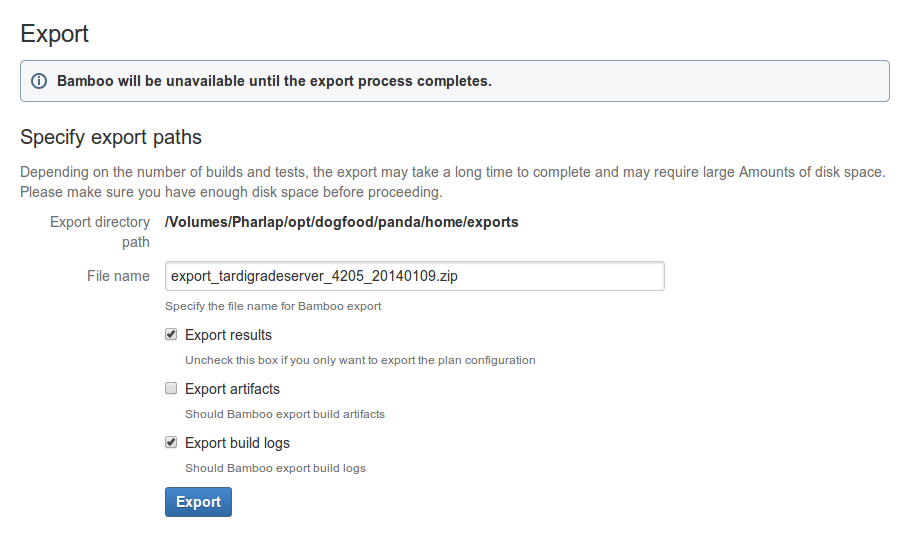Exporting data for backup
Before you begin
- Bamboo will be unavailable while the backup process completes. The export itself may take a long time to complete, depending on the number of builds and tests. We recommend running your backups at a time of day or night when usage is low.
- Backups may require large amounts of disk space, depending on the number of builds and tests. Please make sure you have enough disk space in your desired backup location before proceeding.
- Bamboo will not export if plans are currently being built.
- User management settings for Bamboo will be saved as part of the export. For information on user management in Bamboo, see Connecting to external user directories.
Export Directory Path setting: Bamboo restricts the editing of certain file path settings for security reasons (see Bamboo Security Advisory 2010-05-04). If you must configure Bamboo to permit modification to its file path settings, start Bamboo with the system property -
Dbamboo.paths.set.allowed=true. The procedure for configuring a Bamboo system property is described on Starting Bamboo.
Once you have configured your file path setting, we recommend removing or disabling thebamboo.paths.set.allowedsystem property and restarting Bamboo. If your Bamboo instance is accessible to anyone outside your organization, then this will minimize the risk of Bamboo being compromised by security-related attacks.For large instances we recommend using native database and filesystem backup tools instead of the built in backup/export functionality. For more details, see Automating Bamboo backup operations. Reserve the use of the built-in tools for database type migrations only (e.g. MySQL to PostgreSQL).
Steps
To export data for backup:
- In the upper right corner of the screen, select Administration , and then Overview.
- Select Export in the left navigation column (under 'System').
Complete the following settings:
Export Directory Path
This can be configured – see the note above.
File Name
Edit the default name of the file to which Bamboo will export, if necessary.
Export Results
Clear this to export only the plan configurations.
Export Artifacts
Select to have Bamboo export build artifacts.
Export Build Logs
Select to have Bamboo export build logs.- Select the Export. Bamboo creates the export file in the location shown for Export Directory Path.
